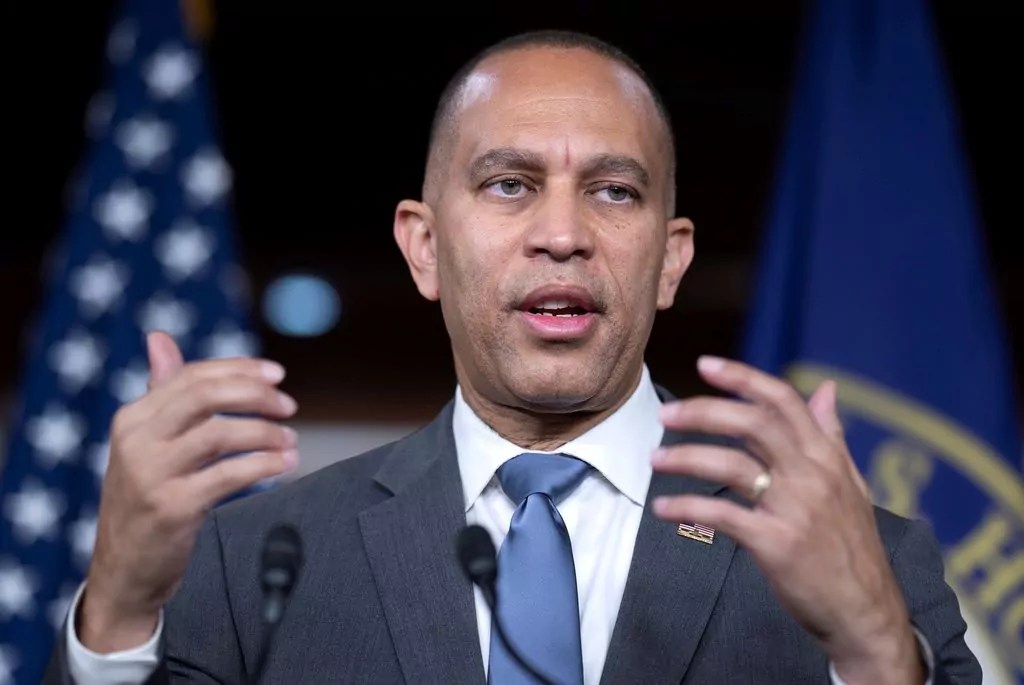Fentanyl victims’ families unite at DEA amidst US overdose crisis.
Deadliest Overdose Crisis in US History: Families Demand Action
Andrea Thomas had never heard of fentanyl when her daughter tragically lost her life after unknowingly taking a pill she believed to be prescription medication. Now, five years later, she stands alongside hundreds of thousands of grieving families who have experienced the devastating consequences of the United States’ deadliest overdose crisis.
On Tuesday, approximately 150 individuals, all of whom have lost a loved one to fentanyl poisoning, gathered at the headquarters of the U.S. Drug Enforcement Administration (DEA). Andrea Thomas found solace in the fact that the man responsible for selling the fatal pill to her daughter, Ashley Romero, was convicted after a thorough DEA investigation. However, she firmly believes that the federal government can do more, particularly in the realm of education.
“When you lose a child, it’s an unnatural order. There is a forever grief that doesn’t go away,” she said. “We’re not going to keep this out, it’s flooding our country. We need education in schools … prevention is going to be our strongest asset.”
Related Stories
-
Cybersecurity, Grooming, and Fentanyl Among Top Concerns Addressed at School Safety Forum
Published on 9/24/2023
-
‘Euphoria’ Star Angus Cloud Accidentally Overdosed on Meth, Cocaine, Fentanyl, Coroner Says
Published on 9/22/2023
During the Family Summit on Fentanyl, Attorney General Merrick Garland announced that the Justice Department will allocate approximately $345 million in federal funding over the next year. This funding will support mentoring programs for at-risk youth and increase access to naloxone, a drug used to reverse opioid overdoses.
“We know that fentanyl is a nearly invisible poison, and that many people who take fentanyl have no idea they are taking it,” Mr. Garland emphasized. “We know that no one—no one person, and no one family—can defeat this epidemic alone. We need each other.”
Mr. Garland also highlighted ongoing criminal cases across the country, from Missouri to Rhode Island to New York City, where the Justice Department is actively pursuing justice for victims of fentanyl-related deaths. Additionally, the department has charged 23 alleged members of the Sinaloa Cartel, with leader Ovidio Guzman Lopez recently being extradited and pleading not guilty to drug and money laundering charges.
Administrator Anne Milgram of the DEA emphasized that the Sinaloa and Jalisco cartels are the primary sources of fentanyl flooding into the United States from Mexico. She stated, “Fentanyl has changed everything. We are facing and confronting a threat that is ever growing. It’s never been more deadly or dangerous.”
Fentanyl, a synthetic opioid known to be exponentially more addictive than heroin, is now the leading cause of death for Americans between the ages of 18 and 49. Shockingly, a mere 2 milligrams of fentanyl can be fatal. Its production cost is less than a penny, making it easily accessible and its potential availability “virtually limitless.”
Often, fentanyl is mixed into other drugs or pressed into counterfeit prescription pills, such as oxycodone, leaving individuals unaware of its presence. Since 2020, over 100,000 deaths per year in the United States have been attributed to drug overdoses, with approximately two-thirds of those deaths linked to fentanyl. This death toll is more than ten times the number of drug-related deaths during the peak of the crack epidemic in 1988.
How can comprehensive educational programs targeting schools and communities help prevent future tragedies related to fentanyl abuse?
Cess to substance abuse treatment and recovery services. While this is a significant step in addressing the overdose crisis, families like Andrea Thomas’ believe that more needs to be done to prevent future tragedies.
The overdose crisis in the United States has reached unparalleled levels, with fentanyl being the primary driver of this epidemic. According to the Centers for Disease Control and Prevention (CDC), over 90,000 people died from drug overdoses in the past year, marking the highest number of overdose deaths ever recorded in a single year. Fentanyl, a powerful synthetic opioid, was involved in more than half of these deaths.
For families like Andrea Thomas’, the pain of losing a loved one to fentanyl poisoning is immeasurable. The loss of a child disrupts the natural order of life, leaving an everlasting grief that never subsides. These families, united in their grief, have come together to demand action from the federal government.
At the Family Summit on Fentanyl, held at the DEA headquarters, families shared their heartbreaking stories and called for stronger measures to combat the overdose crisis. Andrea Thomas emphasized the need for education in schools, recognizing that prevention is the key to saving lives. By educating young people about the dangers of fentanyl and other opioids, they can make informed decisions and avoid falling victim to this deadly drug.
Attorney General Merrick Garland responded to these demands by announcing a substantial allocation of $345 million in federal funding toward mentoring programs and substance abuse treatment. While this funding will undoubtedly make a difference in the lives of many at-risk individuals, families like Andrea Thomas’ believe that more can be done.
The federal government must prioritize comprehensive educational programs that target schools and communities. By providing accurate information about the risks and consequences of fentanyl use, young people can be empowered to make healthier choices. Additionally, investing in prevention efforts will help address the root causes of addiction, such as mental health issues and socioeconomic disparities.
Furthermore, families are calling for stricter regulation and enforcement to stop the influx of illicit fentanyl into the country. The federal government must work closely with international partners to dismantle drug trafficking networks and stem the flow of this deadly substance.
While the $345 million in funding is a step in the right direction, it is crucial that the federal government continues to prioritize the overdose crisis and allocate more resources to prevention, treatment, and enforcement efforts. Families like Andrea Thomas’ have suffered unimaginable losses and are determined to turn their pain into action.
As the deadliest overdose crisis in U.S. history rages on, it is up to the federal government to take swift and decisive action. Lives are at stake, and it is the responsibility of our leaders to do everything in their power to protect and educate the American people. Families like Andrea Thomas’ deserve justice, and the countless lives at risk of fentanyl poisoning deserve a brighter, safer future.
" Conservative News Daily does not always share or support the views and opinions expressed here; they are just those of the writer."





Now loading...